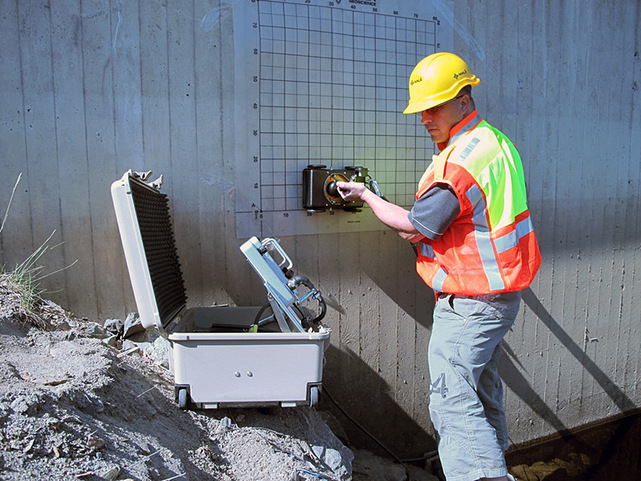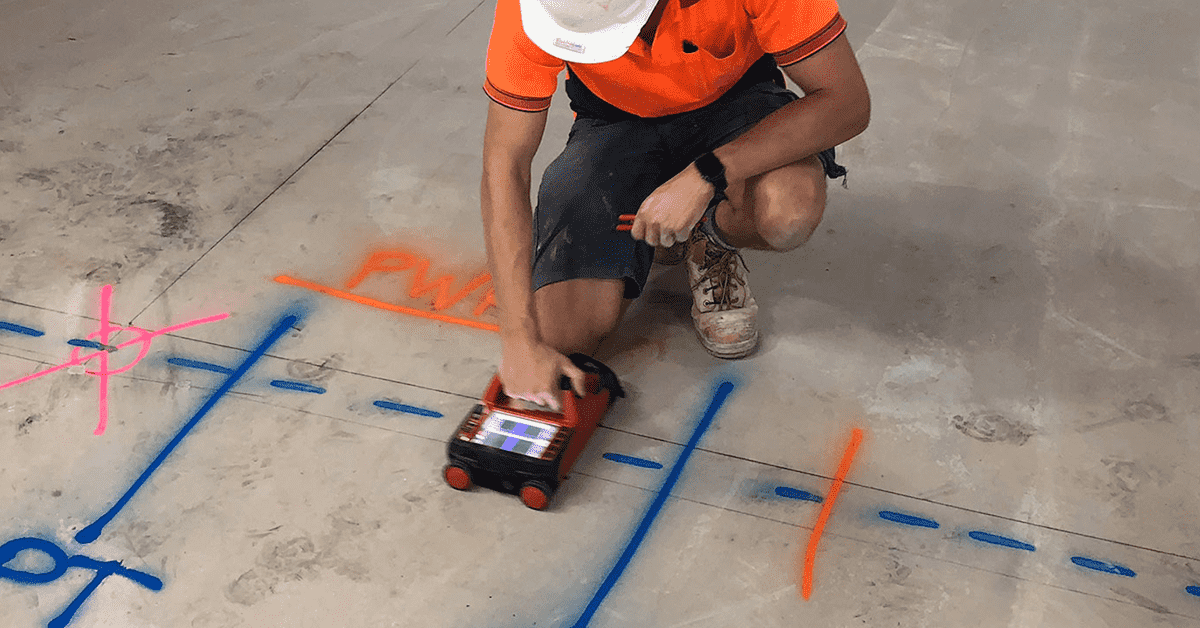Discovering the Key Benefits of Concrete Scanning in Building And Construction Projects
In the realm of contemporary building practices, the utilization of concrete scanning technology has actually become a crucial device for making sure job effectiveness and structural honesty. From improving precaution to properly finding energies concealed under the surface area, the benefits of concrete scanning are complex. The capability to enhance job timelines and reduce expenses while preserving existing frameworks is a testament to the worth this technology offers the building sector. As we explore the nuanced advantages of concrete scanning, it ends up being evident that its influence extends much past surface-level evaluations, providing a peek right into the complex internet of advantages waiting to be revealed.
Enhanced Safety And Security Steps
Making use of advanced concrete scanning modern technology enhances security steps on building websites by supplying accurate discovery of potential risks concealed underneath the surface area. This technology allows building and construction teams to identify rebar, conduits, post-tension cables, and other blockages prior to excavation or exploration, substantially minimizing the threat of accidents. By pinpointing these elements specifically, workers can avoid harmful crucial structural parts, therefore avoiding injuries, delays, and pricey repairs.
Moreover, concrete scanning plays an important function in ensuring the integrity of existing frameworks during renovations or growths. By finding weak points, voids, or degeneration within concrete aspects, engineers can address these problems proactively, enhancing the general safety and security and durability of the structure. This positive approach not only minimizes the threat of structural failings however also lessens the capacity for mishaps caused by unpredicted structural shortages.
In essence, the implementation of concrete scanning technology acts as an aggressive precaution that safeguards both building and construction employees and the architectural honesty of structures, inevitably adding to the general success and performance of construction tasks. - RainierGPR Concrete Scanning
Accurate Discovery of Energies
Concrete scanning technology helps with accurate identification of below ground energies, improving building and construction website safety and performance. Accurate detection of energies is important in construction projects to avoid pricey problems, project delays, and most significantly, guarantee the safety and security of employees and the public. By making use of sophisticated scanning technologies such as ground-penetrating radar (GPR) and electro-magnetic induction, building teams can draw up the area of hidden pipes, cables, and other energies with high degrees of accuracy.

Time and Cost Performance

Concrete scanning modern technology enables building teams to accurately locate rebar, post-tension wires, and various other ingrained items within concrete frameworks. This precise info assists in preventing costly mistakes such as unexpected damages to vital aspects during drilling, reducing, or coring activities. Additionally, by recognizing prospective threats beforehand, the requirement for expensive repair services or revamp due to damages can be minimized, leading to set you back savings for the job.

Additionally, the capacity to swiftly and accurately identify utilities below the surface area without triggering any type of damages not just conserves time but also protects against pricey disturbances to existing facilities. Generally, the browse this site moment and expense performance advantages of concrete scanning make it an indispensable tool for boosting building and construction task administration and execution.
Conservation of Architectural Integrity
Preserving the architectural stability of buildings and facilities is extremely important in making sure lasting security and safety. Concrete scanning plays a critical duty in this conservation process by permitting building professionals to recognize potential dangers to the structural integrity of a building or framework prior to they escalate into major problems. With the use of innovative scanning innovations such as ground-penetrating radar (GPR) and electromagnetic induction, building teams can non-invasively evaluate the condition of concrete structures, situate rebar, post-tension wires, and other embedded aspects, and identify any voids, fractures, or damage within the concrete.
Improved Task Preparation
In order to make sure the successful implementation of building tasks, careful attention to detail official site and thorough preparation are vital components that originate from a detailed understanding of the architectural conditions identified via concrete scanning. Enhanced project planning, promoted by concrete scanning, allows construction groups to preemptively resolve possible difficulties, allocate sources a lot more efficiently, and develop realistic timelines. By accurately identifying the location of rebar, post-tension wires, and various other ingrained items within concrete structures, job supervisors can develop extra specific building plans that reduce the risk of pricey mistakes or delays. Additionally, the information obtained from concrete scanning allows stakeholders to make enlightened decisions pertaining to architectural alterations, renovations, or developments, leading to smoother job transitions and improved general task end results. Ultimately, including concrete scanning right into the task planning phase improves sychronisation among group members, fosters positive analytical, and adds to the successful delivery of building tasks within budget and timetable restraints.
Verdict
In final thought, concrete scanning provides various benefits in building and construction jobs. By boosting precaution, properly discovering utilities, boosting time and expense performance, preserving architectural stability, and helping in job preparation, concrete scanning confirms to be an important tool for effective task execution. Its capacity to minimize risks, boost efficiency, and make certain task stability makes it an indispensable asset for building professionals.
In the realm of contemporary building methods, the utilization of concrete scanning modern technology has actually emerged as a crucial tool for making sure task performance and structural stability.Concrete scanning technology makes it possible for building and construction teams to precisely situate rebar, post-tension wires, and other ingrained items go to my site within concrete frameworks. Via the use of sophisticated scanning innovations such as ground-penetrating radar (GPR) and electromagnetic induction, building teams can non-invasively evaluate the condition of concrete frameworks, find rebar, post-tension cable televisions, and other embedded elements, and identify any kind of spaces, splits, or damage within the concrete.
In order to make sure the successful implementation of building and construction projects, careful attention to information and extensive preparation are crucial elements that stem from a detailed understanding of the architectural problems identified through concrete scanning. Inevitably, including concrete scanning into the job planning phase enhances coordination among group participants, promotes positive analytical, and contributes to the successful shipment of construction projects within budget and schedule restraints.